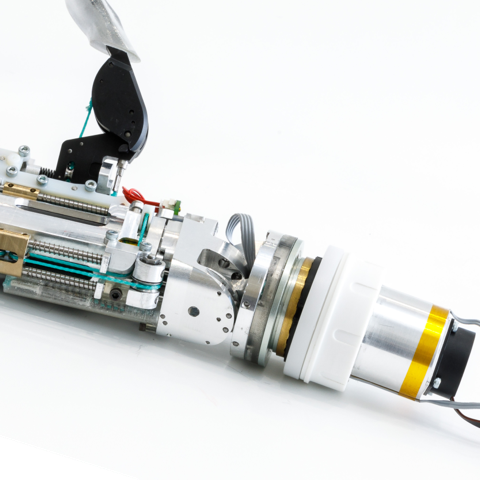
Active wrist prosthesis. Allows rotational movements in both directions. The gearbox is the strong point of this invention, with a planetary stage followed by a cycloidal one, with two opposing discs for mechanical balance.
Active wrist prosthesis. Allows rotational movements in both directions. The gearbox is the strong point of this invention, with a planetary stage followed by a cycloidal one, with two opposing discs for mechanical balance.


Patent Status
PENDING

Priority Number
IT201800007400A

Priority Date
20/07/2018

License
INTERNATIONAL
Problem
The problem consists in the realization of an active prosthesis of the wrist in pronation-supination, composed of a commercial motor and a custom mechanical reducer that meets the high standards of compactness required, capable of guaranteeing the performance of a human wrist, silent operation and irreversibility of the system. with the engine off.
Nowadays, active wrist prostheses are underdeveloped, especially due to the difficulty of being able to create an active device compact enough to fit into the anthropometric encumbrances and into the patient’s cradle.
In addition to this, to be used by patients, the mechanism must meet high standards of strength and silence, and provide irreversibility of the system in the event that the user tries to turn the wrist with the engine off.
Current Technology Limits
Our Technology and Solution
This prosthetic wrist has a particular gearbox, connected to an electric motor: the first stage is epicyclic, operating with three friction wheels, and the second is cycloidal. This last stage uses two opposing discs (with an angle of 180 ° between them) with the typical shape of cycloidal applications, and a camshaft, to allow their reciprocating movement against the external profile. The resulting transmission is robust and rigid, with low play and a high ratio (264: 1) to weight and dimensions.
Advantages
TRL
Team






